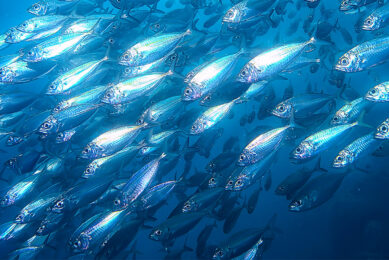Norway and Indonesia team up to double fish output
The Indonesian government’s effort to double its fishery production, which includes fish, shrimp and seaweed, by 2015 has led to an unlikely partnership with Norway.
The Maritime Affairs and Fisheries Ministry will team up with the Nordic country that is the world’s second-largest fish producer to net 22.4 million tons of national fishery production by 2015.
The target would be a significant jump from the 14.9 million tons set for next year. The ministry estimates that production could reach 12.3 million tons in 2011, up from 11.2 million tons in 2010.
Minister Fadel Muhammad said Norway was also chosen for its advanced technology, marking Indonesia’s seriousness about develop aquaculture technology.
Fadel changed fishery orientation from fishing to aquaculture shortly after being inaugurated in October 2009.
“Aquaculture is the most realistic and viable way to have sustainable fish production in the future,” he said in Jakarta at a seminar involving Norwegian fish farming firms, research institutions and government representatives showcasing new aquaculture technology.
Platform
“The goal is to provide a platform where experts from the Indonesian fishing industry can share knowledge and experience with their Norwegian counterparts,” Norwegian Ambassador to Jakarta Eivind Homme said in the seminar’s opening remarks.
Indonesian Ambassador to Oslo Esti Andayani said Indonesia would benefit from the collaboration because the country would not spend a huge amount of money for the new technology.
“Normally, collaboration with other European countries such as France or the UK would cost a lot,” she said, adding that Norway’s involvement also assured locals of participation, which helped the government’s plan to reduce national poverty.
New technology
The ministry’s aquaculture director general Ketut Sugama said that the new technology would promise genetic improvement, feeding systems and disease prevention and could be applied at offshore areas in Lombok, as Indonesia has yet to fully develop its potential there.
“Genetic improvement allows a fish to gain one kilogram in six months instead of a year, which is what we have at present,” Ketut said.
Laurent Genet, Southeast Asia representative of animal nutrition and fish feed maker Nutreco, said that his firm’s food efficiency system would reduce the food consumption of salmon from 3.5 kg to 1.1 kg of small fish such as sardines.
“We could propose our system for salt water fish in Indonesia as it applies well to salmon in Norway,” he said adding that fresh water fish did not have to reduce food consumption because their food was already vegetable-based.
Ketut said that disease prevention technology would protect fish against necrosis virus infections—a virus common among fish.











